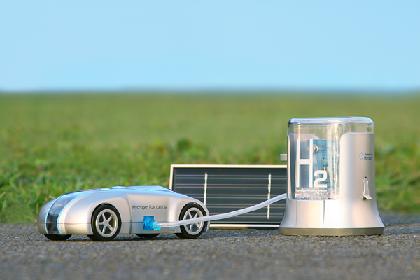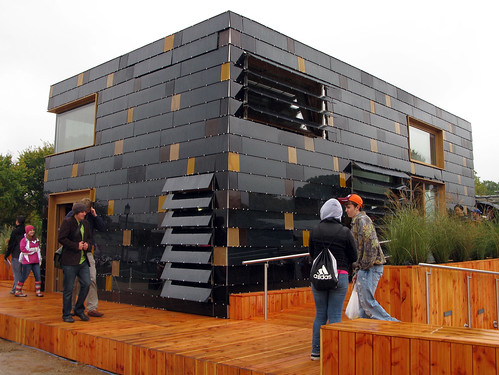Cambridge University Unveiled Solar Car
TECHNOLOGY.AM (APR. 7, 2009) — CAMBRIDGE UNIVERSITY ECO RACING’S (CUER) NEW SOLAR RACING CAR DEMONSTRATES CUTTING-EDGE ENVIRONMENTALLY-FRIENDLY TECHNOLOGY, APPLICABLE TO THE NEXT GENERATION OF ELECTRIC VEHICLES.

The vehicle, currently codenamed ‘Bethany‘, will compete in the World Solar Challenge in Australia in October 2009. This vehicle is capable of cruising at 60mph using the same power as a hairdryer. The car will weigh just 160kg and sports 6m2 of the world’s highest efficiency silicon solar cells.
In order to achieve the car’s extraordinary performance, CUER’s engineering team has systematically reduced energy usage for each part of the car. Aerodynamics, rolling resistance, weight and electrical efficiency have all been optimised to create a vehicle that uses up to 50 times less power than a normal petrol car and has potentially infinite range.
Extensive computer modelling and simulation have been necessary to achieve this, using Dassault Systèmes’ SolidWorks and Simulia packages for mechanical design, ANSYS’s Fluent for aerodynamic simulation, as well as National Instrument’s LabVIEW and The MathWorks’ MatLab and Simulink for systems modelling. Under its solar skin, the racing car is simply an ultra-efficient electric vehicle.
The technologies used are therefore applicable to the commercial electric cars that are beginning to appear on our roads. Technologies used include a 98% efficient electric hub motor, control systems providing battery management (supplied by REAPsystems) and regenerative braking, lightweight mechanical design, and carbon fibre composite bodywork.
One time winner of the Darwin to Adelaide race and arguably, the most expensive solar powered vehicle project to date. This Honda car was used very successfully to advertise Honda road vehicles. This sums spent developing this car would have built and equipped the Solar Navigator catamaran.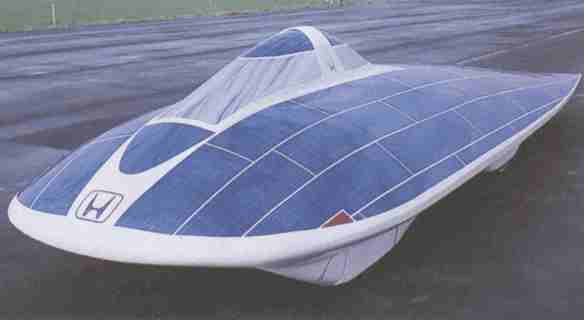
Honda - Darwin to Adelaide winner
Entrants in the cross Australia race, from Darwin to Adelaide, use solar panels to power a lightweight car over 2,000 miles at speeds of up to 50 miles per hour. Clearly, solar power can deliver enough energy to drive a vehicle considerable distance given the right conditions.
Honda Entering Solar Cell Market for Homes and Vehicles - 18 December 2005
Nikkei. Honda Motor is entering the market for solar cells designed for use in households and also plans to promote their use in vehicles, according to a report in the Nihon Keizai Shimbun.
Honda is building a ¥10-billion (US$86.5-million) factory to begin mass production in fiscal 2007 of solar cells made an inexpensive thin-membrane non-silicon metal compound developed by Honda engineering. The Honda solar panels, first announced in 2002, feature a light-absorbing layer formed by a compound made of copper, indium, gallium and diselenium (CIGS).
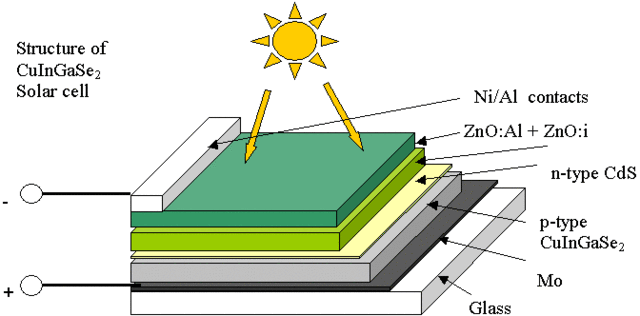
Thin-film solar cells based on CIGS (Cu(In,Ga)Se2) absorbers are among the leading devices which are expected to lower the costs for photovoltaic energy conversion. Other companies working with CIGS cells include Shell Solar and Würth.
Early Honda CIGS module prototypes had a maximum output of 112 W at dimensions of 1,367 × 802 × 46 mm. Honda is working to improve the efficiency.
Honda’s solar cells will likely sell for some 1.5 million yen each, 20%-30% less than silicon-made cells, according to the report.
The new plant will initially have an annual capacity to produce about 30 megawatts worth of solar cells, enough for 10,000 households a year. Initially, the company aims to market them only in Japan. But it will later sell them in overseas markets, eyeing mainly North America and Europe, where demand is expected to surge in the future.
Honda is also considering a scheme that would use solar cells to power a home electrolysis unit for the production of hydrogen for vehicle refueling. Honda’s current prototype home hydrogen
energy systems rely on natural gas reforming.
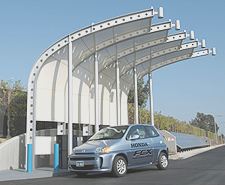
Honda combined its CIGS solar cells with a Honda-developed compact electrolysis unit that uses a new Ruthenium-based catalyst in a prototype at its Torrance, California facility.
The prototype solar-powered electrolysis unit produces hydrogen at a rate of 2 normal cubic meters per hour (Nm3/hr).









